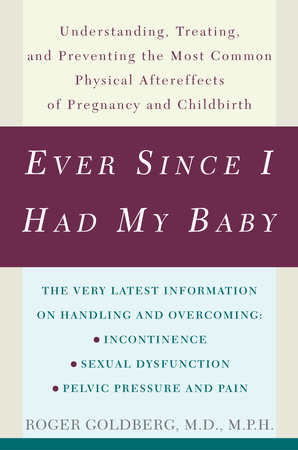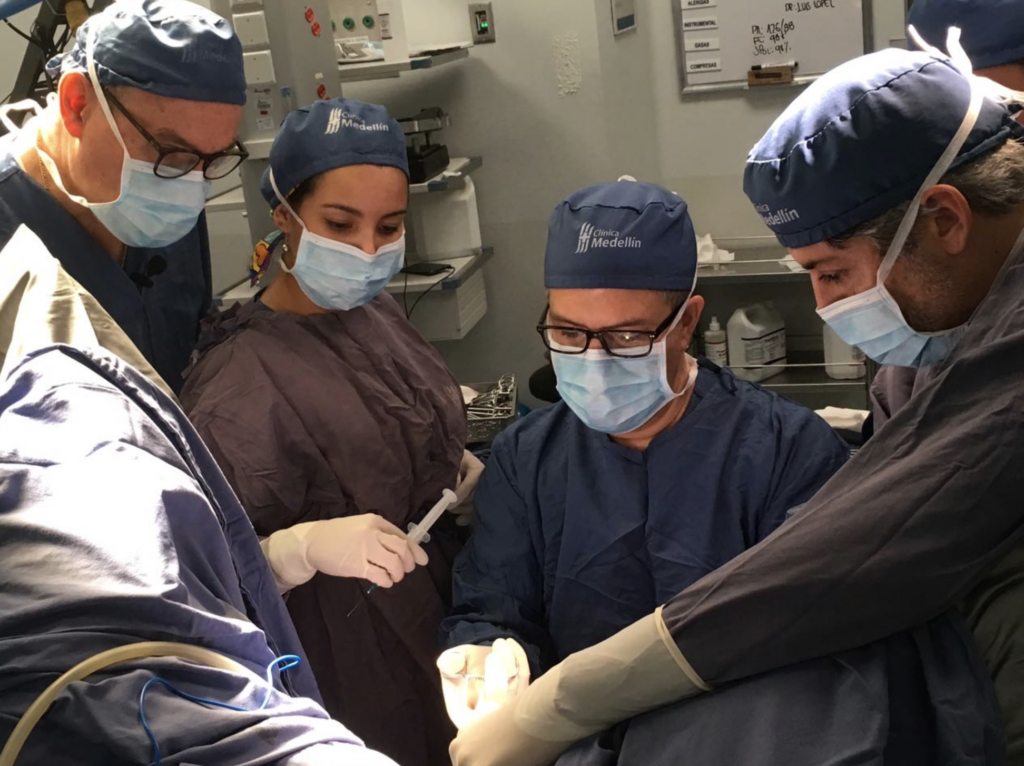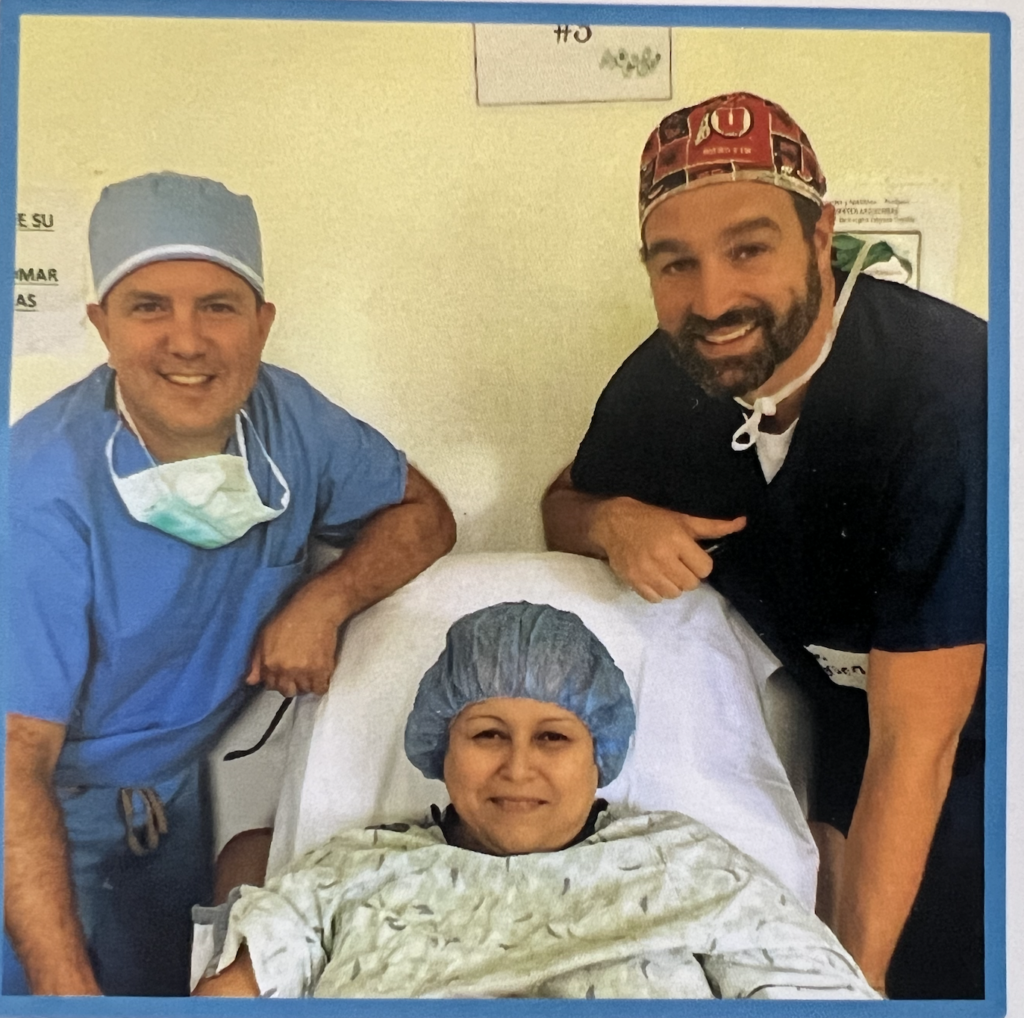Women can experience a variety of uncomfortable pelvic issues following childbirth or as they get older. From occasional or frequent incontinence and painful intercourse to bowel issues and prolapse, these issues cause not only physical discomfort but also self-consciousness and a diminished quality of life.
Many women suffer in silence with these issues. For 25 years, Roger Goldberg, MD MPH, head of the urogynecology division at NorthShore / University of Chicago and author of the book “Ever Since I Had My Baby,” has made it his mission to let women know that they don’t have to put up the uncomfortable side effects of pelvic issues.

Offering innovative procedures that are non-invasive and even nonsurgical, Dr. Goldberg’s practice (which includes many female practitioners for those who don’t prefer a male pelvic doctor) positions itself as a haven for women who want their bodies back, at any age, for any reason.
We spoke with Dr. Goldberg about his clinic’s offerings, common misperceptions women have about treatments, and how they can improve their lives. This interview has been condensed and edited.

What do you wish more women knew about when it comes to pelvic health?
We’ve been fighting a battle of patient awareness. Women are still unaware that whether they have a long childbirth or a short childbirth, a big baby or a small baby, their bodies are never going to be quite the same.
Female bladder control is a huge issue. It affects anywhere upwards of 50% of women by the time they’re menopausal. Leaking with coughing, sneezing, running, and jumping is called stress incontinence. We’ve honed in on a 15-minute outpatient procedure with 90% success to address this.
Even here on the educated North Shore [of Chicago], women say, “Oh, you can fix that?” We have yet to scratch the surface of educating women on bladder control, which in human history has considered the cost of having kids. It’s not. It’s fixable with a quick outpatient procedure for many women.
There are different bladder disorders, and we have tests to determine if you are a candidate for the quick fix. Are you better off with physical therapy? We have injectables for some women where we don’t even need to go to the operating room.

What is Obstructed Defecation Syndrome, and what can you do for it?
Obstructed defecation affects about a third to a fifth of women. It’s a feeling of not being able to empty the stool. These women will say, “I feel like I am trying to go to the bathroom, but it feels stuck, and I have a hard time. I’m sitting on the toilet for long periods. Often, nothing happens, and I am uncomfortable.”
Even women with a smooth childbirth experience may develop bowel changes over time and have trouble with constipation and a feeling of not being able to evacuate, which is an unpleasant thing to talk about, but it’s common. On a typical day, I’ll see three or four women who will, when asked, nod their heads and say, “Yes, that’s me.” This is not a small problem; it is a major quality-of-life issue.
We can fix that problem for many women with a 40-minute outpatient procedure and no external incisions. They’re able to leave the hospital that day. This is only done here, but we’re starting to get the word out and train trusted colleagues.
These issues have been the least discussed in cocktail conversations with friends and even among doctors because there was a feeling of, “Well, there’s nothing you can do about that.” Also, it’s embarrassing: who wants to talk about that part of your body?
What’s important to realize is that it’s a pelvic floor condition due to weaknesses that result from childbirth. It’s an easily diagnosable physical loosening or detachment. The surgical method we’ve developed, which we’ve been doing for about six years, attaches those supports back into place.
It’s exciting to see a condition that has been thoroughly ignored, and that can make a massive impact on quality of life. But, it’s going to take women who had a great outcome coming out of their shells, telling their neighbors and doctors for people to understand this is not an inevitable cost of having a baby.
What are other common issues that women may go through that they may not realize can be treated by someone like you?
Loss of bladder control or change in bowel function. About 25% of women, even six months after having a baby, might also have some sexual complaint.
This is a hard one for women to talk about, but when they feel that there’s pressure or dropping or, even in the worst scenario, something they see physically coming out, that’s pelvic organ prolapse. It is typically benign, but that’s not how most women want to feel.

Some women find it hard to come to the doctor because they think it’s going to lead automatically to surgery. That is far from the case. I sometimes refer a dozen patients to physical therapy on a busy office day. We work closely with female physical therapy providers doing natural rejuvenation techniques. If they learn how to locate and work out the pelvic floor, it can make a woman feel like a different person.
We’ve innovated strategies to fix pelvic organ prolapse without performing a hysterectomy, which was unheard of when I was in training. For women who want to retain the uterus and want a simpler surgical solution, we can support the uterus back into place, often as an outpatient procedure. Whereas it used to be an invasive surgery, we can use percutaneous techniques where the ligaments can be suspended without incision.
Is there an expiration date for getting your post-baby issues addressed?
Absolutely no expiration date. We have some younger people who come in during pregnancy or right after childbirth. We see women in their 30s; we see women in their 90s with other pelvic floor issues.
Suppose you’re at the point where issues are preventing you from exercising or socializing. In that case, those are critical areas that should take precedence. Suppose there is a pelvic floor disorder (PFD) that is mild but, most of the time, not inhibiting quality of life. In that case, there’s no reason to rush or to be overly aggressive. For women in the middle who are bothered but perhaps not ready for surgery, it’s critical for everyone in that category to realize that there are nonsurgical solutions.
What do women tend to not know about prolapse?
Prolapse is a condition where, typically, childbirth injuries lead to weakness of the ligaments that are suspending the uterus, the bladder, the vagina, and the rectum. What most women notice is a feeling of dropping or pressure. Then, when prolapse becomes symptomatic, it’s a physical bulge. It’s much like a hernia, a protrusion of tissue at the opening that shouldn’t be there.
It’s a common condition. We see women who are shocked and quite scared. They notice that they have a prolapsed bulge, and they’re not quite sure if this is cancer or if it’s something that’s going to progress to “Is my uterus going to fall out?” Typically, no. It’s usually slow-acting. The key thing is to get yourself in to see a urogynecologist.

We deal with mostly outpatient surgeries. There’s been a lot of fear and misunderstanding over using mesh. Mesh is not something we use in the majority of cases. There are many women with prolapse where we can perform what’s called a natural tissue repair, where there’s no mesh whatsoever. There are other cases where the mesh is worth discussing because our more severe prolapse cases might offer more durability. The mesh that we’re using today has been studied for decades.
What can you do for bladder pain?
Bladder pain is separate from pelvic floor disorders. It’s underdiagnosed. Women who have felt that they have urinary infections often come in with a history of, “I get infections, my bladder hurts.” Sometimes, when you look more carefully, these women haven’t been suffering from recurrent bladder infections.
We see in young, healthy people conditions such as interstitial cystitis or Painful Bladder Syndrome, which accounts for the urgency and the frequency of the pain. Often, these women have had decades of dealing, and we can treat those problems. There’s no surgery required. These women are treated in the office typically with medications that we put directly into their bladder.
We also address overactive bladder. This condition causes urgency, frequency and “gotta go” sensations with little warning to reach the bathroom.
We offer many innovative nonsurgical therapies, above and beyond the usual medications and physical therapy. This includes Botox for the bladder, painless acupuncture-based treatments done in the office, and even tiny implantable pacemakers with batteries that can provide relief for 15 years before needing a change.
Our group was the only center in the Midwest to participate in the study of a new tiny implantable stimulator “coin” that relieves symptoms in many women. This is another quickly evolving part of our field, as with our innovations for other PFDs. We’ve been able to offer our patients alternatives that are sometimes years ahead of what’s generally available elsewhere.
How To Help
NorthShore Hospitals Foundation helps Endeavor Health Northshore Hospitals to “help everyone in our communities be our best.” You can allocate your monetary donation to one of the many programs within the foundation, including the Cardiovascular Institute Fund, Infant Special Care Unit, Kellogg Cancer Center, Nursing Scholarship Fund, and many others. Simply choose from the drop-down menu on the donation page to make your choice.

More From Better
- For the Dad Who Has Has Everything, Write a Note and Donate For Father’s Day Instead
- How Nurse-Family Partnership Helps Young Families Give Children a Healthy Start
- You Said It: I’m an Economist — Here’s Why DEI in Business, Education and Community Leads to Economic Prosperity

Claire Zulkey is a writer based in Evanston, IL, where she was born and raised. Her writing has appeared in local publications like Block Club Chicago, the Evanston Roundtable and Chicago Magazine, as well as national publications like the New York Times, Wall Street Journal, and the Atlantic.

